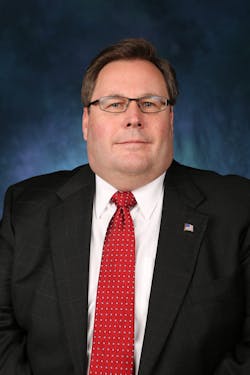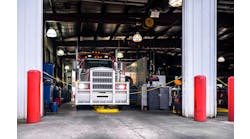James Svaasand is Vice President, Collision Center Development & Operations at Penske Truck Leasing. He recently sat down with FenderBender to discuss the heavy duty repair world, and where it’s possibly headed next.
First, the credentials—how did you get into heavy duty?
I’ve been with Penske since 1982. I held previous positions at a Pontiac/GMC dealership, including working in the body shop. I did some light paint work and worked on GM trucks and automobiles, eventually transitioning out when Hertz-Penske needed warranty claims writers. I was welcomed aboard and progressed to higher levels of responsibility in the field and corporate offices.
Penske made news last year when two Georgia collision repair shops were the first awarded Gold Class status in heavy-duty repair. What does that mean for the industry?
It’s very exciting, and we’re extremely proud of what we’ve been able to achieve with I-CAR. If I-CAR can be the conduit by which heavy duty finally makes significant inroads with the OEMs and other partner/contributing organizations, we have a bright future ahead. I think it’s possible.
Getting more robust and standardized repair procedures in place will require the cooperation of the OEMs and a partner like I-CAR may help give us the voice and visibility we need to create significant change and transparency in heavy duty repair. Finally embracing commercial vehicles and heavy duty trucks is a huge moment—the audience at the recent Heavy Duty Forum let out a collective sigh of relief that we got the attention of I-CAR.
For over 40 years, I-CAR has been one of the primary channels to work with OEMs in safety and repair, and now that opportunity is here for heavy duty. The importance of achieving Gold Class status can’t be understated.
How has the technician shortage affected you/your business?
The hunt for talent is constant, as always. Thankfully we have an absolutely first-class recruiting team and we’re proactively working with local vocational, technical and trade schools to educate students about viable futures in heavy duty repair. We spend a lot of time in classes and in the field showing students what’s possible—much of the curriculum is automotive based, but many don’t consider heavy duty when weighing their options. They should.
We have over 327,000 pieces of equipment in our fleet and over 8,700 technicians in our workforce. We want to grow that number and keep the industry healthy and fresh; we want to create career paths. We’ve created and trademarked a video-based training system called How 2, and students can access those via tablets on the shop floor to get the training they need in the space they need it. We’ve invested heavily in technology, recruitment, and education, and now count many office- or corporate-level employees who began as technicians, just like these students. Many already graduate with Platinum-level I-CAR certifications; it’s important for them to know they have a roadmap and can continue the journey in heavy duty.
What excites you about the future of heavy duty repair?
The technology is moving at light speed, obviously. Our ability to keep up with it is exciting. We collaborate with the OEMs, I-CAR and a host of different organizations. I think today’s young tech is looking for that. They want to be challenged, and ADAS presents that.
Uncertainty and change are constant. We offer our customers (lease or own) that technology, and because we have such strong partnerships and relationships with OEMs—as well as providers of some of the devices themselves, such as Bendix—we work closely with them to understand how ADAS works. Recalibration is now a necessity to get those cameras back to factory standards. Before we deliver a vehicle from the shop, we have to make sure we’ve gone through the diagnostic and calibration aspects of responsible repair. And the younger generation seems to be really interested in that.
Think about the composite materials as well—that’s really gone a long way in our ability to attract and retain technicians. We can keep our technicians up to speed. Yesterday’s technicians are not going to fix today’s trucks.
We’ve always tried to take a leadership role and embrace technology where it makes sense. For example, we were the first to market on our rental fleet with LED headlamps. We hope for more collaboration in the future, particularly with I-CAR and other industry contributors such as 3M.



